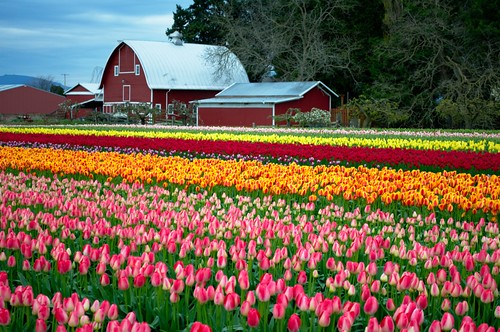So with that said, if you are unfamiliar with RAW formats, (or new to photography - especially DSLR photography) RAW is just what the name implies: an unprocessed, typically uncompressed (or minimally compressed) image file containing all the information seen by the camera's sensor. JPG on the other hand is a compressed and processed format. Every digital camera applies sharpening, color corrections and other image processing (based on camera settings) to every photo before the final JPG file is saved on the memory card.
RAW files contain the unprocessed data from the image sensor and will need to be opened in a RAW editor to be developed before use for on-line or printing. The developing does add an additional step to your work-flow, but I have found an advantage to this is that many times all that is needed is to import the RAW file, let the RAW editor do its default sharpening and base curve, and then export the file to get an image that looks better than the flat JPG file straight from the camera. This development step also gives you complete control over the development process and the ultimate results in the final image, of course the trade off is in extra time.
The extra data in the RAW file also gives you more flexibility to recover or improve an image that may have otherwise been destined for the take and file never to be shared or looked over again pile. Another interesting tidbit with RAW file's is the overall pixel dimensions. While my JPG files from my Nikon D5100 are 4928x3264 the RAW files come out slightly larger at 4946x3280. RAW files will also be much larger in file size. While the JPG images my camera takes average around 5-8 MB, the RAW files average 15-20MB and once processed, the exported JPG files are typically just as big as the original RAW files. So you will be looking at a significant boost in needed storage space when dealing with RAW files (a somewhat moot point when its pretty difficult to get anything less than a 320GB drive in a computer these days, and more common to have at least a 500GB drive).
When it comes to JPG, the camera does all the processing. You will be able to make changes to in camera settings, but ultimately the camera has the final say. You can of course do more development to a JPG file in many image editing programs, but you will have some limitations that are not present in the RAW editing process. Shooting JPG files also reduces your photo archive storage footprint, as they take up significantly less space. In many scenarios the JPG from the camera has all the quality one would expect and need, with some images needing just a slight adjustment after the fact in an image editor.
Another option is the RAW+JPG setting on your camera (if available). I find that I use this setting more and more lately as it gives you the best of both worlds. You have the RAW file available when you want or need more creative/development options and you also have the quick snap right out of the camera available for printing and sharing on-line on demand. The biggest disadvantages to the RAW+JPG setting are: a reduced memory card capacity, extra hard drive space required for storing and backing up all your photos and the extra time needed for sorting and managing the extra files (RAW,JPG & JPG export of the RAW file).
Below is a a quick sample to illustrate some of the points mentioned above:
 |
| JPG from the camera |
 |
| Developed RAW file |
What is best is ultimately up to the individual, I have been pleased with the RAW+JPG option for a good balance between artistic photos and family photos. Also not leaving the camera on RAW only means my bride can take and download photos while I am at work with out having to learn an extra import/export step if the camera happened to be left on RAW only.
Blessings,
Jesse
No comments:
Post a Comment